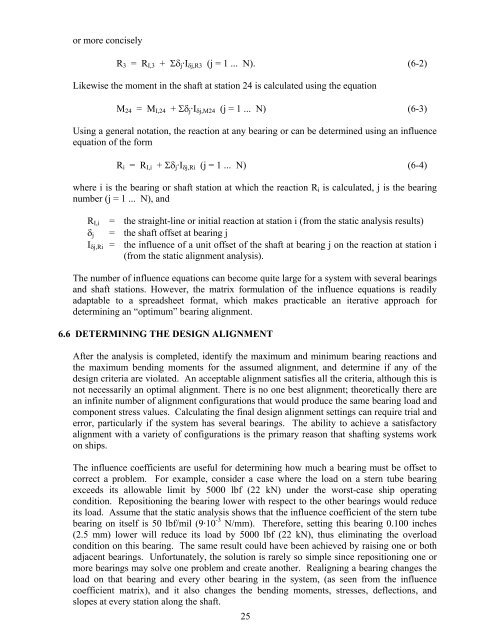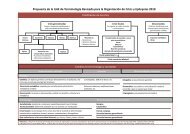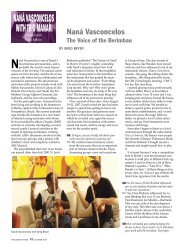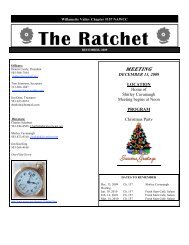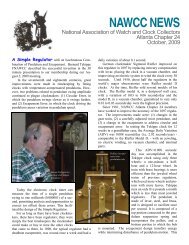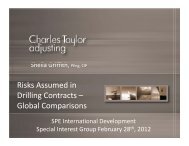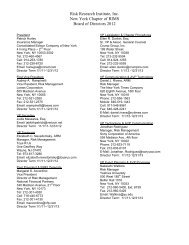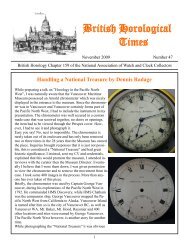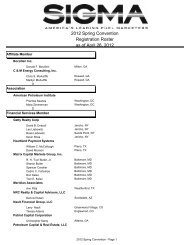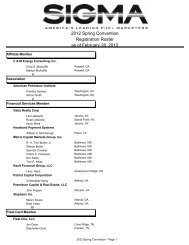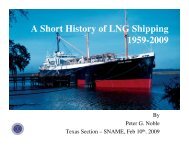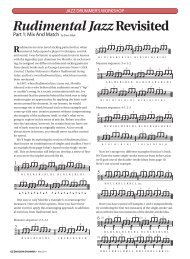Technical and Research Bulletin 3-51 - Amazon Web Services
Technical and Research Bulletin 3-51 - Amazon Web Services
Technical and Research Bulletin 3-51 - Amazon Web Services
You also want an ePaper? Increase the reach of your titles
YUMPU automatically turns print PDFs into web optimized ePapers that Google loves.
or more concisely<br />
R3 = RI,3 + Σδj·Iδj,R3 (j = 1 ... N). (6-2)<br />
Likewise the moment in the shaft at station 24 is calculated using the equation<br />
M24 = MI,24 + Σδj·Iδj,M24 (j = 1 ... N) (6-3)<br />
Using a general notation, the reaction at any bearing or can be determined using an influence<br />
equation of the form<br />
Ri = RI,i + Σδj·Iδj,Ri (j = 1 ... N) (6-4)<br />
where i is the bearing or shaft station at which the reaction Ri is calculated, j is the bearing<br />
number (j = 1 ... N), <strong>and</strong><br />
RI,i = the straight-line or initial reaction at station i (from the static analysis results)<br />
δj = the shaft offset at bearing j<br />
Iδj,Ri = the influence of a unit offset of the shaft at bearing j on the reaction at station i<br />
(from the static alignment analysis).<br />
The number of influence equations can become quite large for a system with several bearings<br />
<strong>and</strong> shaft stations. However, the matrix formulation of the influence equations is readily<br />
adaptable to a spreadsheet format, which makes practicable an iterative approach for<br />
determining an “optimum” bearing alignment.<br />
6.6 DETERMINING THE DESIGN ALIGNMENT<br />
After the analysis is completed, identify the maximum <strong>and</strong> minimum bearing reactions <strong>and</strong><br />
the maximum bending moments for the assumed alignment, <strong>and</strong> determine if any of the<br />
design criteria are violated. An acceptable alignment satisfies all the criteria, although this is<br />
not necessarily an optimal alignment. There is no one best alignment; theoretically there are<br />
an infinite number of alignment configurations that would produce the same bearing load <strong>and</strong><br />
component stress values. Calculating the final design alignment settings can require trial <strong>and</strong><br />
error, particularly if the system has several bearings. The ability to achieve a satisfactory<br />
alignment with a variety of configurations is the primary reason that shafting systems work<br />
on ships.<br />
The influence coefficients are useful for determining how much a bearing must be offset to<br />
correct a problem. For example, consider a case where the load on a stern tube bearing<br />
exceeds its allowable limit by 5000 lbf (22 kN) under the worst-case ship operating<br />
condition. Repositioning the bearing lower with respect to the other bearings would reduce<br />
its load. Assume that the static analysis shows that the influence coefficient of the stern tube<br />
bearing on itself is 50 lbf/mil (9·10 -3 N/mm). Therefore, setting this bearing 0.100 inches<br />
(2.5 mm) lower will reduce its load by 5000 lbf (22 kN), thus eliminating the overload<br />
condition on this bearing. The same result could have been achieved by raising one or both<br />
adjacent bearings. Unfortunately, the solution is rarely so simple since repositioning one or<br />
more bearings may solve one problem <strong>and</strong> create another. Realigning a bearing changes the<br />
load on that bearing <strong>and</strong> every other bearing in the system, (as seen from the influence<br />
coefficient matrix), <strong>and</strong> it also changes the bending moments, stresses, deflections, <strong>and</strong><br />
slopes at every station along the shaft.<br />
25


